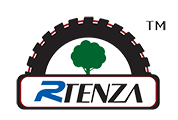The rubber processing technology describes the process of transforming simple raw materials into rubber products with specific properties and shapes. The main content includes:
- Rubber compounding system:
The process of combining raw rubber and additives based on the performance requirements of the product, considering factors such as processing technology performance and cost. The general coordination system includes raw rubber, vulcanization system, reinforcement system, protective system, plasticizer system, etc. Sometimes it also includes other special systems such as flame retardant, coloring, foaming, anti-static, conductive, etc.
1) Raw rubber (or used in combination with other polymers): parent material or matrix material
2) Vulcanization system: A system that chemically interacts with rubber macromolecules, transforming rubber from linear macromolecules into a three-dimensional network structure, improving rubber properties and stabilizing its morphology.
3) Reinforcement filling system: Adding reinforcing agents such as carbon black or other fillers to rubber, or improving its mechanical properties, improving process performance, or reducing product costs.
4) Protection system: Add anti-aging agents to delay the aging of rubber and improve the service life of products.
5) Plasticizing system: reduces the hardness of the product and the viscosity of the mixed rubber, and improves the processing performance.
- The processing technology of rubber:
No matter what rubber product, it must go through two processes: mixing and vulcanization. For many rubber products, such as hoses, tapes, tires, etc., they also need to go through two processes: rolling and extrusion. For raw rubber with high Mooney viscosity, it also needs to be molded. Therefore, the most basic and important processing process in rubber processing includes the following stages:
1) Refining: reducing the molecular weight of raw rubber, increasing plasticity, and improving processability.
2) Mixing: Mix all components in the formula evenly to make a mixed rubber.
3) Rolling: The process of making semi-finished products of certain specifications by mixing rubber or using skeleton materials such as textiles and steel wires through pressing, molding, bonding, wiping, and gluing operations.
4) Pressing: The process of pressing semi-finished products with various cross-sections, such as inner tubes, tread, sidewalls, and rubber hoses, out of mixed rubber through the mouth shape.
5) Vulcanization: The final step in rubber processing, which involves a chemical reaction of rubber macromolecules to produce cross-linking after a certain temperature, pressure, and time.
Post time: May-06-2024


